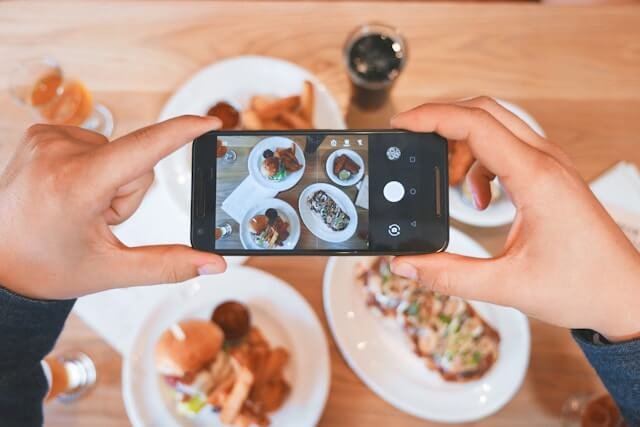Table of Contents
ToggleMarketing Your Personal Chef Services
The culinary world is as rich and diverse as the dishes that populate it. If you’re an aspiring personal chef, you’re stepping into a profession that marries the art of cooking with the business of delighting discerning palates. However, the leap from kitchen enthusiast to professional personal chef isn’t just about the quality of your cuisine; it’s about connecting that cuisine to those who are craving it. This comprehensive guide is for you—the passionate cooking entrepreneur—as you set out to market your personal chef services.
Introduction: The Art of Culinary Marketing
In the age of social media and food trends, culinary services have ascended from necessity to luxury. People are looking for more than just a meal—they want an experience. Effective marketing is your ticket to the dining table. It’s not about flooding the market with glossy images of amuse-bouches, but about first finding your place in the market and then, reaching out to an audience that doesn’t know they need you yet. Marketing Your Personal Chef Services:
Finding Your Niche: The Flavor of Your Brand
Before you can begin to market your services, you must define what exactly those services are. Individual preferences, dietary restrictions, and cultural nuances all play a part in the personal culinary experience you provide. You might decide to specialize in vegan cuisine, or offer your expertise in regional gastronomy like Cajun or Lebanese. To find your niche, ask yourself what you’re passionate about, where your culinary strengths lie, and where an unsatisfied hunger persists.

Identifying Unique Selling Points
Your unique selling points (USPs) are what will set you apart in a crowded food market. Perhaps it’s your use of locally-sourced, organic ingredients, or your adaptability to create meals for specific dietary needs. These are the aspects you’ll emphasize in your marketing.
Understanding Clientele Preferences
Knowing your target audience is as important as knowing your own menu. Are you offering fine dining for busy professionals, or hearty home-cooked meals for large family gatherings? Research the demographics and behaviors of those likely to hire a personal chef.

Creating a Perfect Client Template: Menu for Success
Craft a detailed persona of what your ideal client looks like. This isn’t just about demographics; it’s about their lifestyle, interests, and why they would want your services. Having a clear understanding of your target audience will help you tailor your services and marketing efforts to attract the right clients.
Firstly, consider the age range, gender, and income level of your ideal client. This will give you a general idea of who they are and what their spending habits may be. For example, if you offer high-end personal chef services, your target audience may be middle-aged professionals with a higher income. On the other hand, if you cater to busy families on a budget, your ideal client may be parents in their 30s or 40s with children.

Defining Ideal Client Personas
Your ideal client might be a busy executive who values health and time savings, or a couple who love to entertain but lack culinary skills. By creating these personas, you can tailor your marketing to address their specific needs and desires.
Here are a few steps to help you define your ideal client personas:
1. Identify Your Target Audience
Before creating personas, it’s important to understand who your target audience is. This includes their demographics, lifestyle, interests, and pain points. For example, if you’re targeting busy executives, you may want to consider their income level, work schedule, and health concerns.
2. Conduct Market Research
To gain a deeper understanding of your target audience, conduct market research through surveys or focus groups. This will provide valuable insights into their behaviors and preferences when it comes to food and cooking.
3. Create Personas Based on Data
Use the data collected from your market research to create detailed personas for your ideal clients. These should include information such as their age, gender, occupation, household size, dietary restrictions, and cooking experience. This will help you tailor your content and services to meet their specific needs.
4. Develop a Brand Identity
Your brand identity is what sets you apart from other personal chefs. It encompasses your mission, values, and unique selling points. Think about what makes your services stand out and how you want to be perceived by potential clients.
5. Create Engaging Content
To attract potential clients to your website, create engaging content that showcases your expertise and personality as a personal chef. This can include recipes, cooking tips, behind-the-scenes glimpses of your business, or blog posts on health and wellness topics.
6. Utilize Social Media
Social media is a powerful tool for promoting your personal chef services. Use platforms like Instagram, Facebook, and LinkedIn to showcase your work, share client testimonials, and engage with potential clients.
7. Partner with Local Businesses
Partnering with local businesses can help expand your reach and attract new clients. Reach out to health food stores, fitness centers, or nutritionists in your area to see if you can collaborate on events or offer discounts to their customers.

Meeting Client Needs
Your services should be a direct response to the needs and wants of your ideal clients. Whether it’s simplifying their meal prep, offering a five-star dining experience at home, or providing cooking lessons, ensure that your services address a clear pain point or desire. This will not only attract potential clients but also show them that you understand their needs and are the right person to meet them.
Personalized Menu Planning
One of the most important ways to meet your client’s needs is by offering personalized menu planning. This means taking into consideration their dietary restrictions, food preferences, and health goals when creating a menu for their meals. By doing so, you are providing a tailored experience that caters to their specific needs and shows that you value their individuality.

Locating Your Clients: A Recipe for Success
Finding clients isn’t about chance; it’s about strategy. Market research will be your compass, directing you to where the potential for business is highest. In order to build a successful personal chef business, you need to understand your target audience and how to reach them.
Firstly, it’s important to define your niche. What type of clients are you looking for? Do you specialize in vegan cuisine or do you cater to busy families who want healthy meal options? Knowing your niche will help you focus your efforts and tailor your services accordingly.
Utilizing Market Research Techniques
Conduct surveys, gather testimonials, and keep track of your competition. This data is gold for shaping your marketing efforts. Marketing Your Personal Chef Services.
Market research is a crucial aspect of creating a successful business strategy. It involves gathering and analyzing information about your target audience, your competition, and industry trends. As an organic personal chef, understanding market research techniques can greatly benefit your business.
Surveys are an effective way to gather insights from your current and potential clients. By asking specific questions, you can gain valuable information about their preferences, dietary restrictions, and budget. This data can help you tailor your services to better meet the needs of your customers.

Identifying Platforms Where Potential Clients Gather
Marketing Your Personal Chef Services. Your clients might not be in the places you expect. They could be joining local recipe sharing groups on Facebook, attending food fairs, or even browsing food blogs. Identify the platforms and events that align with your niche and start making your presence known. This is a crucial step in expanding your reach and connecting with potential clients.
One way to identify these platforms is by conducting market research. Look into your target market’s demographics, interests, and behaviors. This information can help you narrow down the places they are most likely to gather online or offline.
Social media is a powerful tool for marketing your personal chef services. It allows you to reach a large audience and engage with them on a more personal level. Identify which social media platforms your target audience uses the most and create a strong presence on those platforms. Use hashtags relevant to your niche to attract potential clients who are interested in the type of food you offer.
Networking events, trade shows, and food fairs are also great places to connect with potential clients. These events provide an opportunity for you to showcase your skills and gain exposure. Be sure to have business cards or promotional materials on hand to distribute to interested individuals.
Additionally, word-of-mouth marketing is crucial in the personal chef industry. Encourage satisfied clients to spread the word about your services by offering referral discounts or incentives. This not only helps bring in new clients but also builds trust and credibility for your brand.
Another effective way to market your personal chef services is through partnerships with other businesses or professionals in related fields. For example, collaborating with a local nutritionist or fitness instructor can tap into a similar target audience and offer additional value to potential clients.
Your website can also serve as a powerful marketing tool. Make sure it is visually appealing, user-friendly, and showcases your services and testimonials from satisfied clients. Utilize social media platforms to promote your services, share photos of your dishes, and engage with potential clients.
Networking is essential for any business, but especially for a personal chef. Attend local food festivals, events, and conferences to meet other industry professionals and potential clients. Building relationships and making connections can lead to new opportunities for your business.
In addition to marketing strategies, it’s important to continuously improve and evolve as a personal chef. Keep up-to-date with culinary trends, take courses or workshops to expand your skills, and always seek feedback from clients to ensure their satisfaction.

Developing a Strategic Marketing Plan: Building Your Culinary Empire
Now that you know where and who your clients are, it’s time to build your marketing campaign. This is the heart of your business growth. A well-developed marketing plan can make all the difference in how fast your business grows and how successful it becomes.
Before you dive into creating a strategic marketing plan, it’s important to understand what exactly a marketing plan is. A marketing plan is a written document that outlines your company’s overall marketing efforts. It includes an analysis of your target market, customer demographics, competition, and the tactics and strategies you will use to reach potential customers.
The first step in developing a strategic marketing plan for your personal chef business is to define your unique selling proposition (USP). Your USP sets you apart from other chefs and highlights what makes your services unique. This could be a particular cuisine or style of cooking, specialized dietary options like vegan or gluten-free, or exceptional customer service.
Once you have a clear understanding of your USP, the next step is to conduct market research. This involves gathering information about your target audience and their preferences, behaviors, and spending habits. You may also want to research your competition to see how they are positioning themselves in the market and identify any gaps or opportunities that you can leverage.
Using this information, you can then develop a marketing strategy tailored to reach your target audience. This may include creating a strong online presence through social media channels and a professional website, attending local food festivals or events, collaborating with other businesses or catering companies, or offering promotions and discounts to attract new customers.

Branding Your Services: From Name to Logo to Website
Your brand is what will make you memorable. Choose a name that’s both creative and descriptive, design a logo that resonates with your cuisine, and create a website that not only showcases your talents but makes it easy for clients to book you.
Choosing a Name:
Start by brainstorming words that reflect your culinary style and the type of services you offer. Keep it simple, easy to pronounce, and unique. You want your name to stand out in people’s minds so they remember you when they are looking for a personal chef. Once you have a list of potential names, do some research to make sure it’s not already taken by another business. Check social media platforms, domain availability, and trademark databases.
Designing Your Logo:
Your logo should be visually appealing and represent your brand. It can be as simple or elaborate as you want, but keep in mind that it will be used on all your marketing materials – from business cards to website banners – so make sure it’s versatile and scalable.
When designing your logo, consider incorporating elements that reflect your culinary style and the type of services you offer. For example, if you specialize in farm-to-table cuisine, incorporate a farm or vegetable element into your logo. If you focus on international flavors, include a globe or map symbol.
You may also want to use colors that represent freshness and health, such as green for vegetables or blue for water. Or choose a color palette that reflects the mood and atmosphere of your cooking – warm tones like reds and oranges for spicy dishes, cool blues and purples for more refined cuisines.

Crafting a Strong Social Media Presence
Instagram-worthy photos and lively tweets can make your services come alive online. Share recipes, behind-the-scenes glimpses, and engaging content that defines your expertise.
Implementing Specific Actions to Attract Clients
Offer a free taste testing, contribute recipes to local publications, or host a cooking class. Each action should be a mix of informative, engaging, and a showcase of your culinary capabilities.

Attracting Clients: The Culinary Call
After all the planning, it’s time to put your marketing into action. Here are strategies to attract your new, eager customers.
Leveraging Social Media for Engagement
Engaging with your audience on social media is a two-way street. Create conversations around food and community. Share not just your dishes, but also your personal story and passion for cooking.

Networking Strategies and Referrals
Build relationships with local event planners, food journalists, and influential food bloggers. Word of mouth is a powerful marketing tool; create a network that will help spread the word about your amazing culinary services.
Conclusion: The Table Is Set
The path to success in the personal chef industry is laden with delectable opportunities for the taking. However, it’s not enough to just do the cooking; you must bring your feast to the hungry! By following the comprehensive guide above, you’ve learned that effective marketing for personal chef services is about building connections, creating experiences, and letting your culinary fire light the way. Now, it’s time to take that first step. Set your table, welcome your guests, and serve the world your extraordinary talents. Bon Appétit

